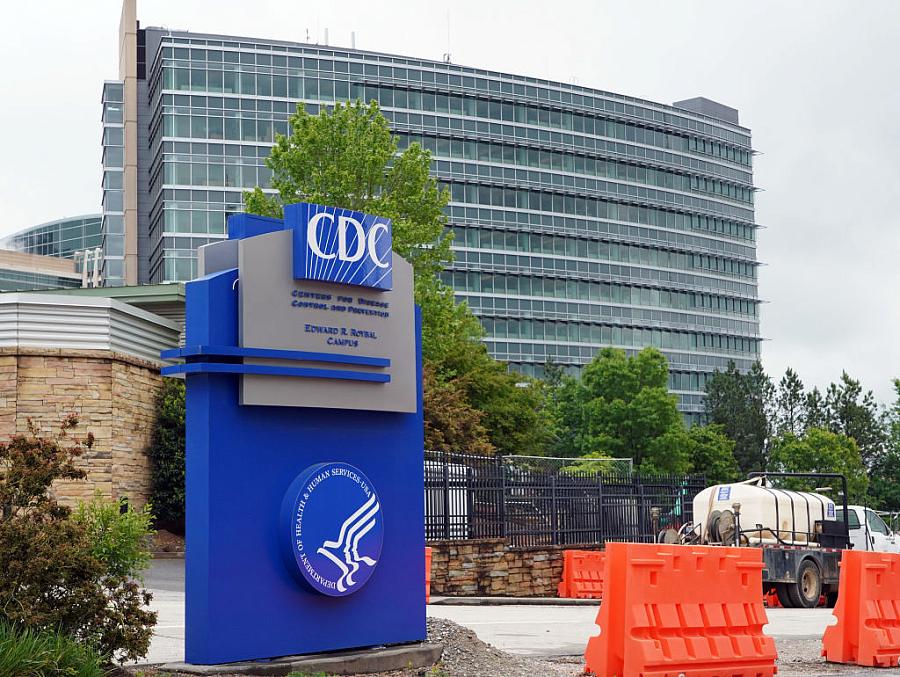Where's the CDC? A veteran health reporter on the agency’s absence during COVID-19

Anyone home during COVID-19? Not always, it seems.
(Photo by Tami Chappell / AFP)
The U.S. Centers for Disease Control and Prevention prides itself with being the premiere public health institution in the world. But as the nation continues reeling from the relentless advance of the coronavirus pandemic, journalists, health experts and former CDC officials alike are demanding an explanation for the agency's repeated failures — and general absence — in the face of the crisis.
“The CDC has long been the steady, trusted source for high-quality national data and evidence-based guidance. But not this time, when its voice is needed the most,” wrote Harvard Global Health Institute faculty director Ashish K. Jha in an opinion piece for STAT. “Ask how many COVID-19 tests have been done, and the CDC doesn’t have an answer. Want a daily update on how many people are getting hospitalized for COVID-19? The CDC isn’t tracking it. Want to know if social distancing is making a difference? The CDC doesn’t know.”
We asked veteran health and investigative journalist Alison Young about her take on such criticisms by Jha and others. Now head of the Missouri School of Journalism’s Washington Program, Young spent years covering the CDC for The Atlanta Journal-Constitution and then USA Today. This interview has been edited for length and clarity.
Center for Health Journalism: When it comes to concerns expressed by Jha and others that the CDC isn’t fulfilling its role in the U.S. public health response to COVID-19, do those criticisms ring true to you?
Alison Young: Unfortunately, there’s a lot that does ring true and is being echoed by officials who used to work for the CDC. All you need to do is look at comments that are being raised by Dr. Tom Frieden, who is one of the most immediate past CDC directors. He's done a number of media interviews saying he finds it inexplicable that the CDC has been essentially sidelined, at least in terms of the public view, in what's going on with this pandemic. And there is concern as well from other former officials at CDC.
One of the things that strikes me most in these critiques is this issue of being able to get basic data from the CDC about what’s happening. In covering the CDC, one inside joke I heard on occasion is that CDC stands for “count, divide and compare,” which is the cornerstone of epidemiology. It’s at the heart of what they do. And if you can’t count it, you can’t change what’s going on. So, to have criticisms about the counting, and also the sharing of those counts, strikes at the very heart of what the agency is.
CHJ: What’s changed for national reporters who would normally be looking to the agency for updates and a sense of what will happen next?
Young: Now instead of regular CDC briefings on the pandemic, the main briefing mechanism is the White House. And that's a very different forum. In the past, you’d primarily have health and science reporters at CDC briefings, so you’d see much more technical questioning by the press corps covering the issue. And the agency would bring in actual scientists — true subject matter experts to answer the questions. Now we are so far removed in these briefings. It's just a very different animal and then on top of that, it's the White House press corps who is doing the questioning, and their expertise and background is very different from, say, the science and health press corps.
I think we continue to try to understand what went wrong in the initial phases of analyzing the outbreak and the development of our testing strategy. Something else that still deserves reporting is the questions that surround the science of masks and why we've had such changing guidance on that.
CHJ: And when it comes to non-investigative reporters, who just really need trustworthy data to cover this pandemic, do they now need to be turning to alternative sources of information or doubting their ability to use information from the CDC?
Young: I'm not ready to say abandon official government sources of information. We need to be mindful that private sources of information also have the potential to be flawed or influenced. Our job is to triangulate that information and try to create as complete a picture as possible. We need to make the effort as journalists to understand the sources we are relying on. What are the assumptions they are based on? If it's a count, what exactly are they counting and how are they getting the information? And we need to be transparent with our readers, viewers and listeners about the limitations of that information.
For example, we need to remind our readers that case counts only reflect the number of detected cases. If you have a case count of only 50, it doesn’t mean there were only 50 people infected in your huge city. We use these things as shorthand in our stories, but people are still confused, which means we're not doing a good enough job filling in those details.

